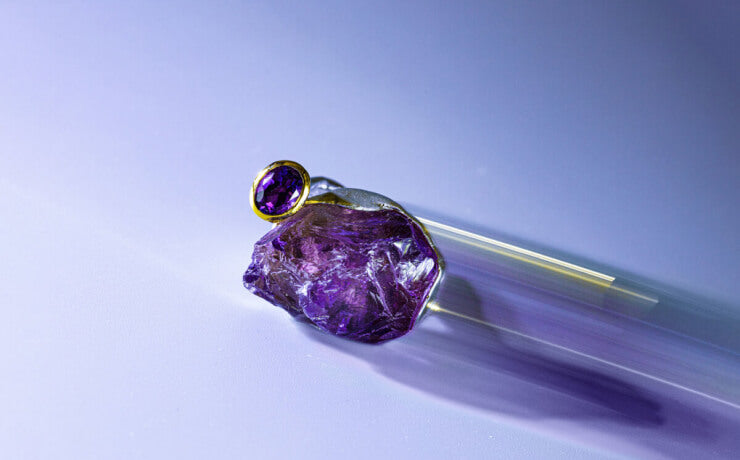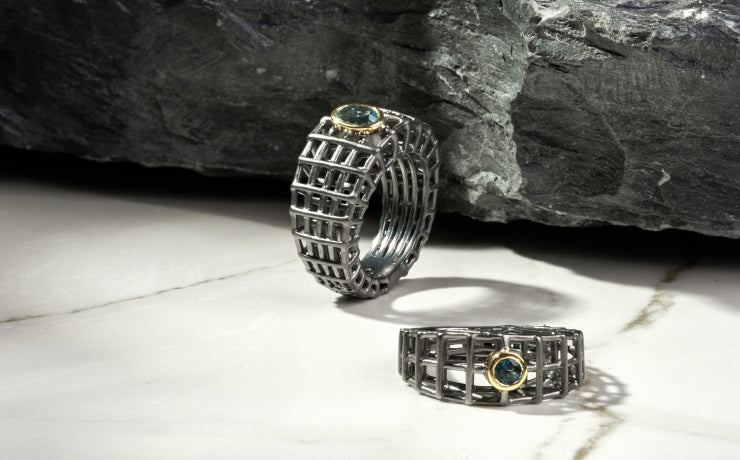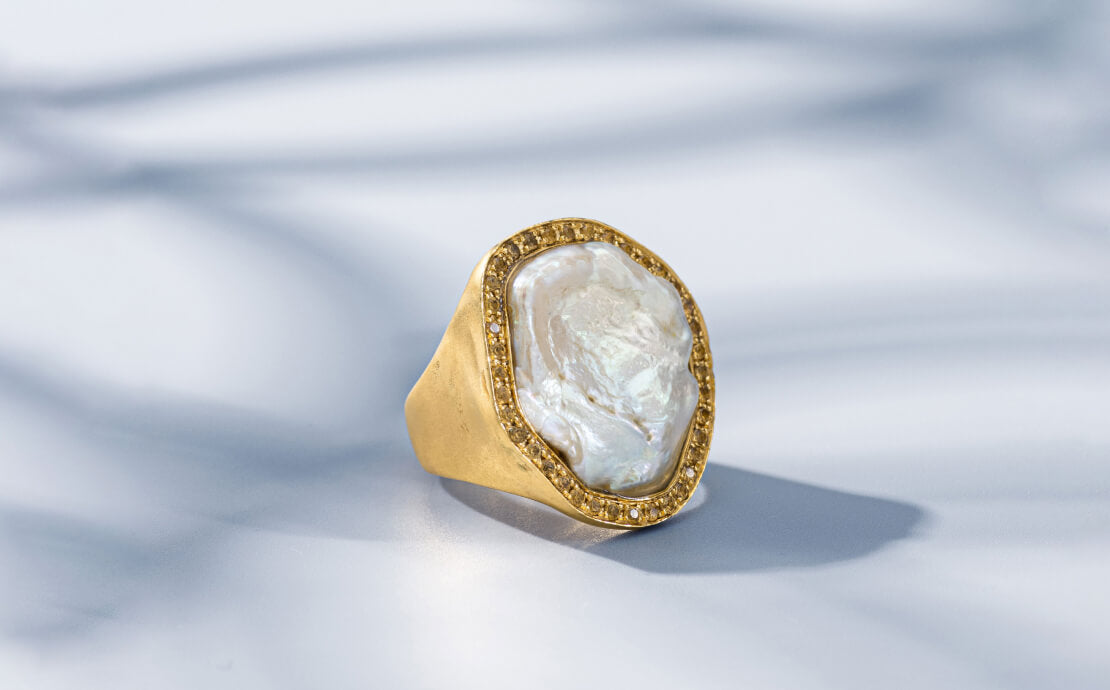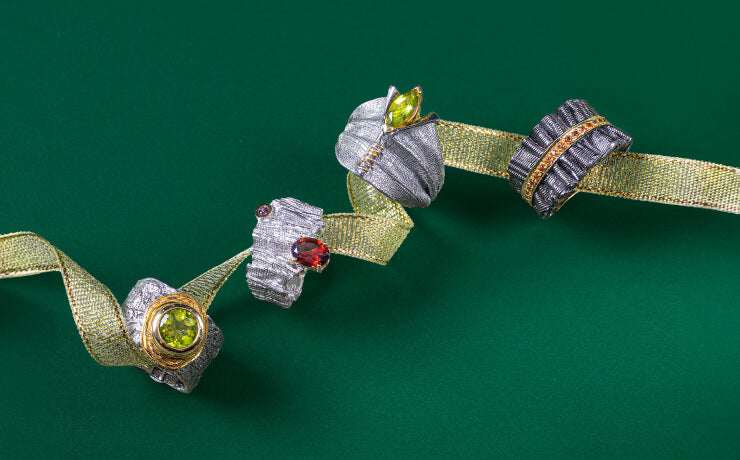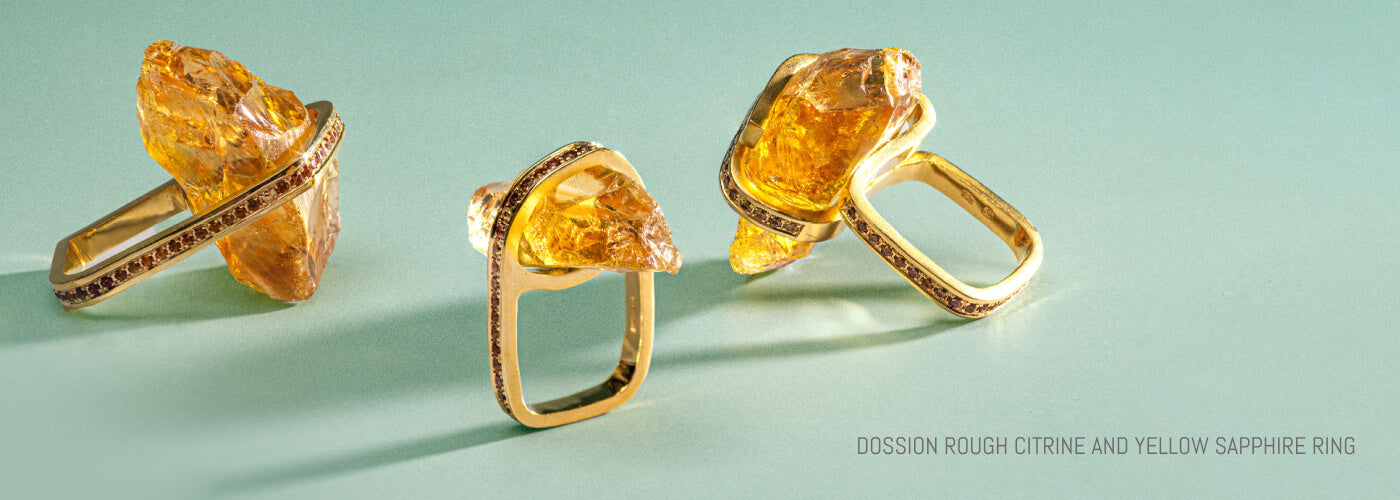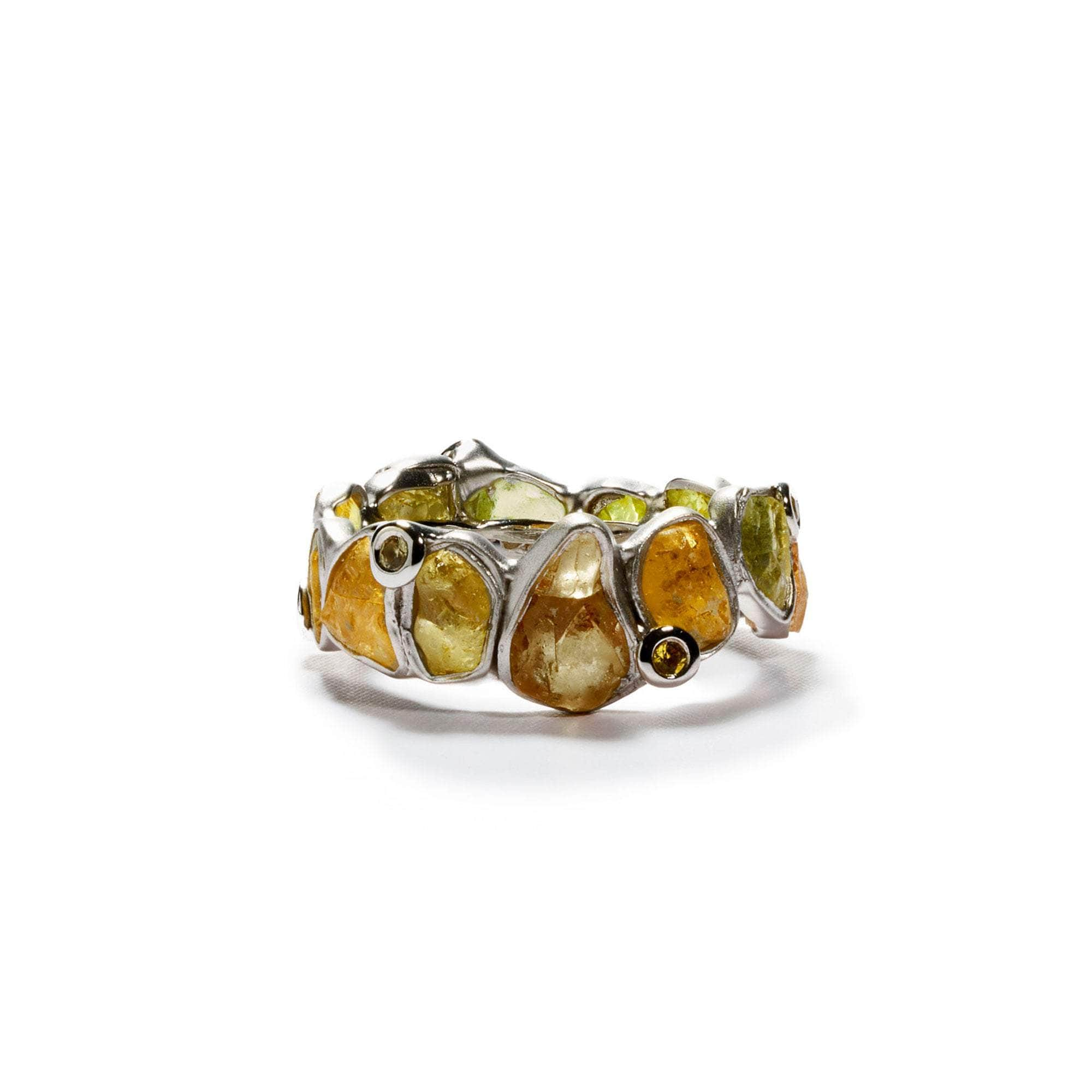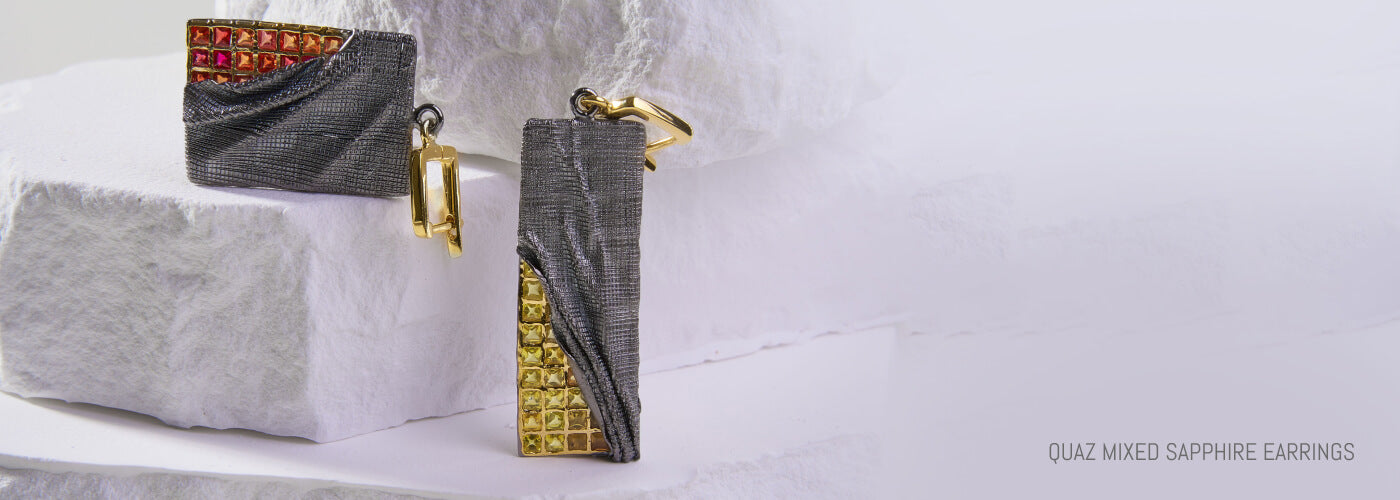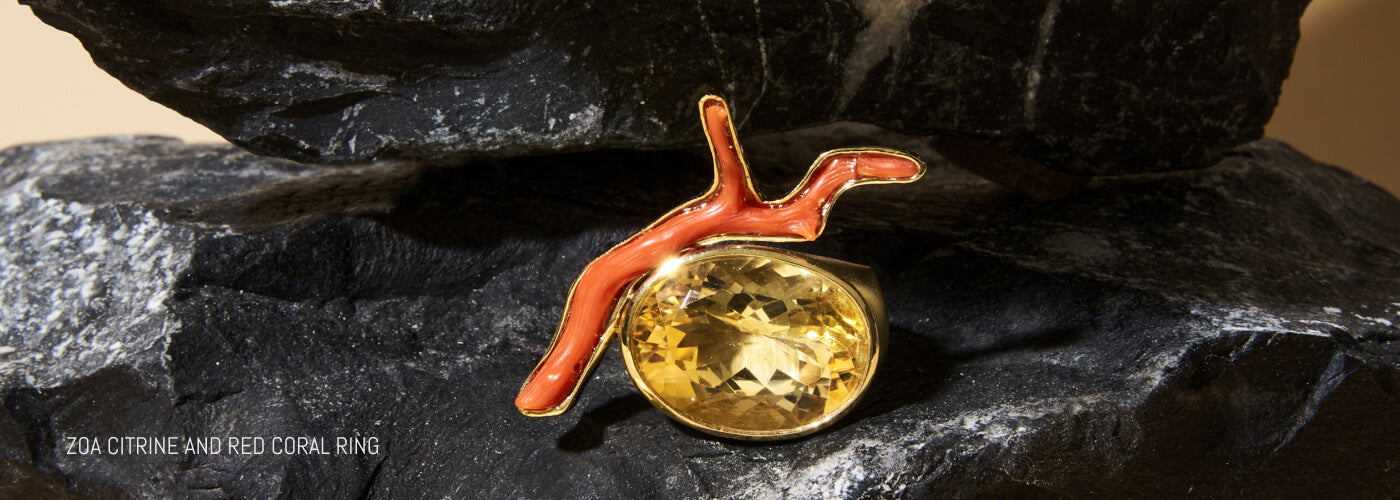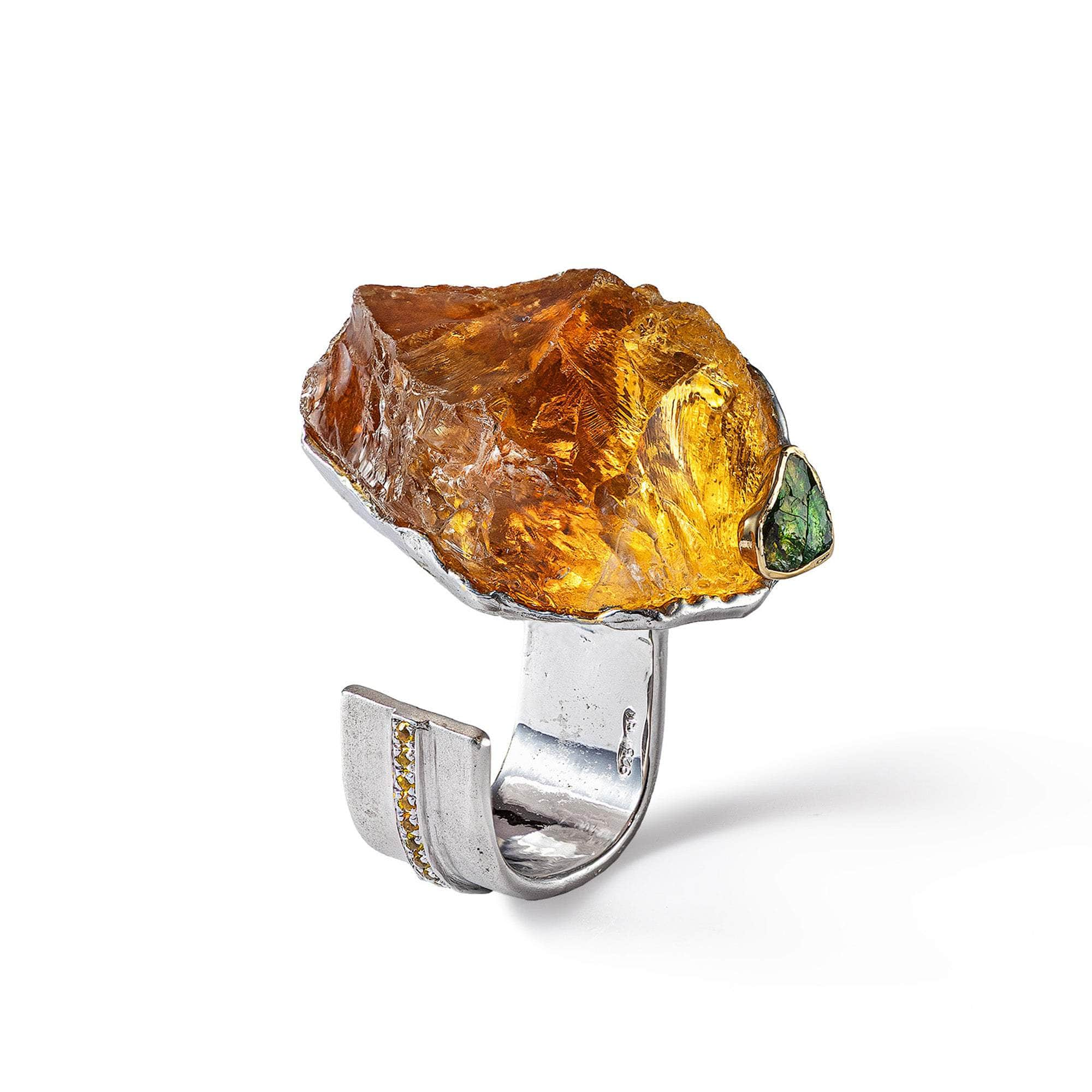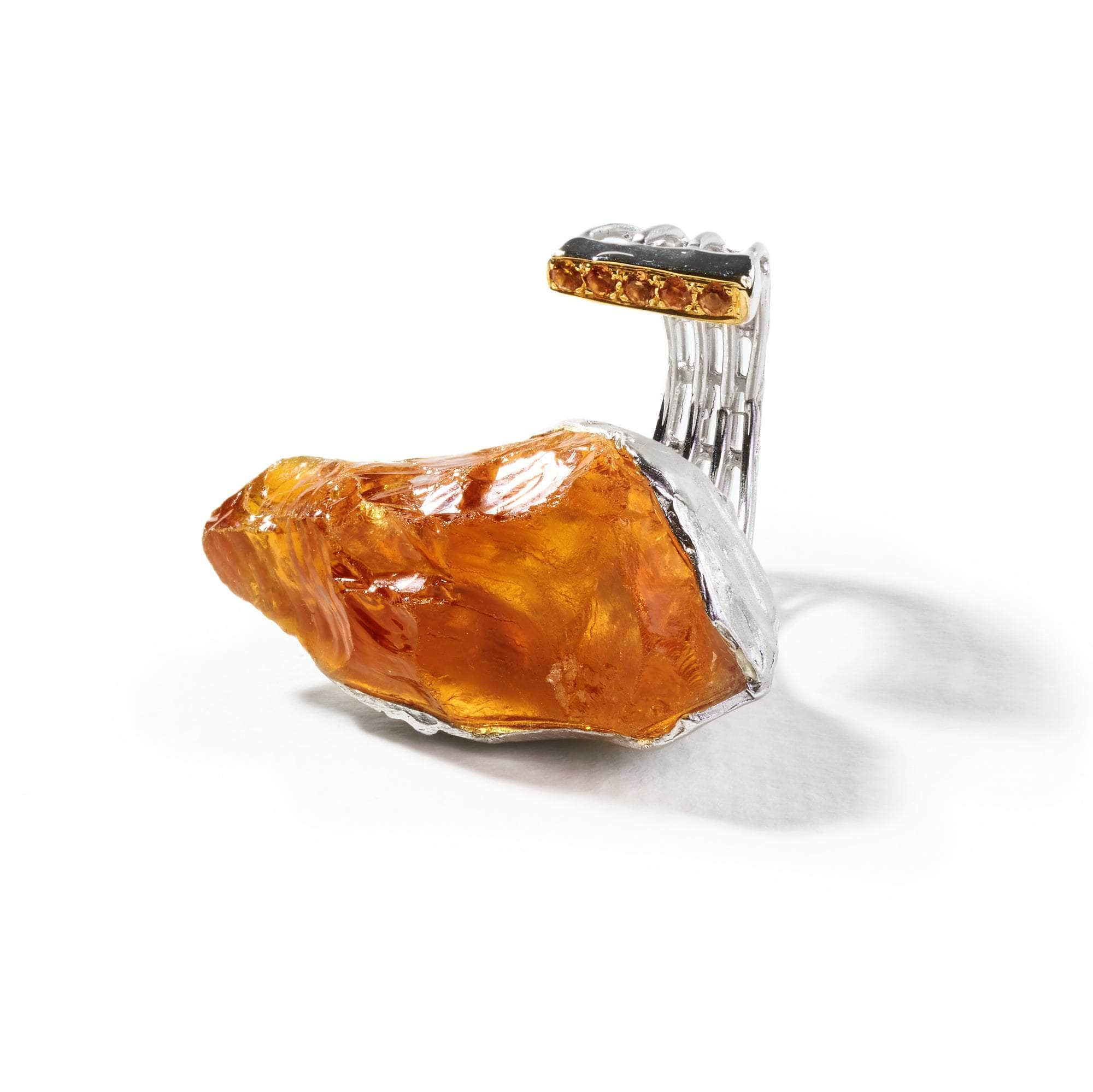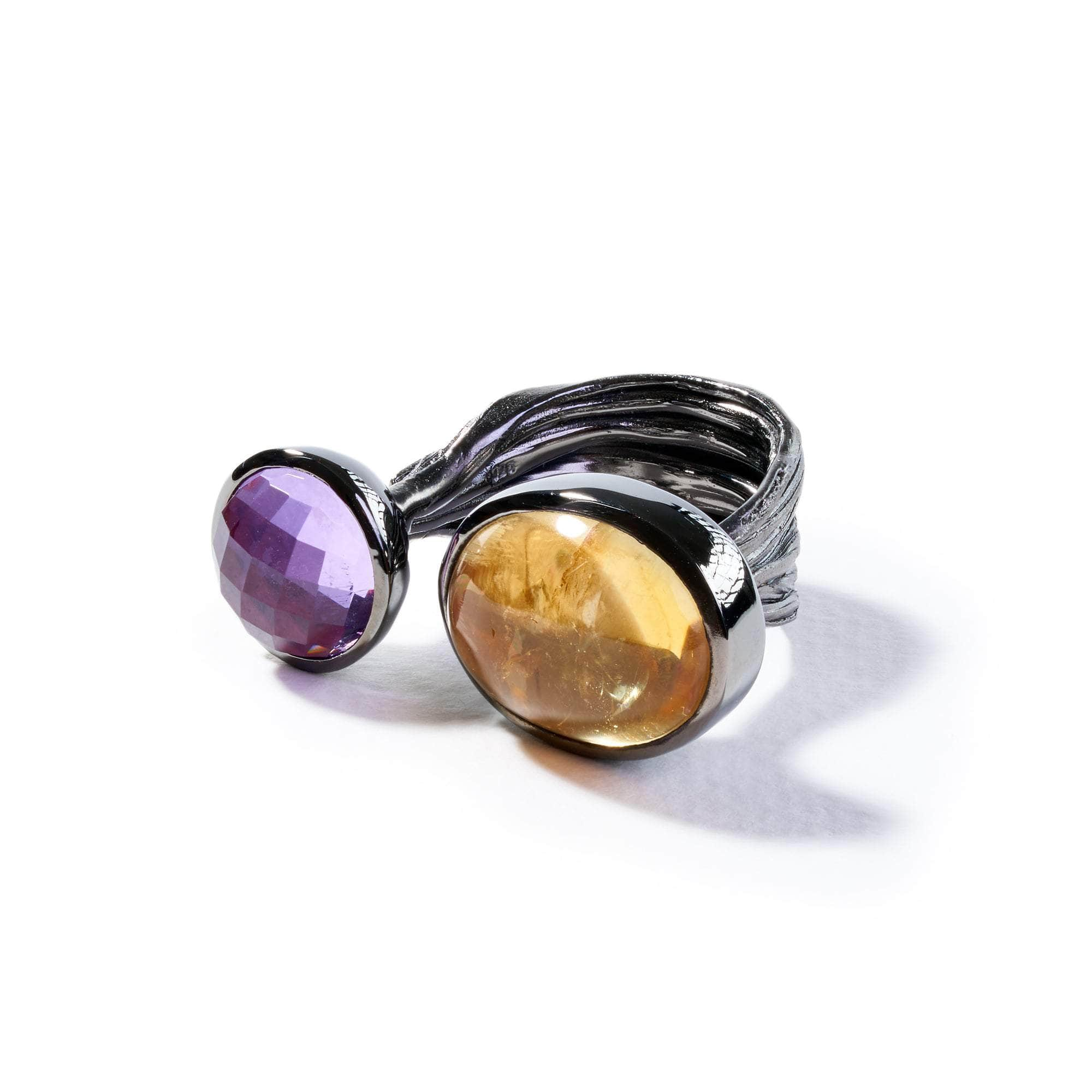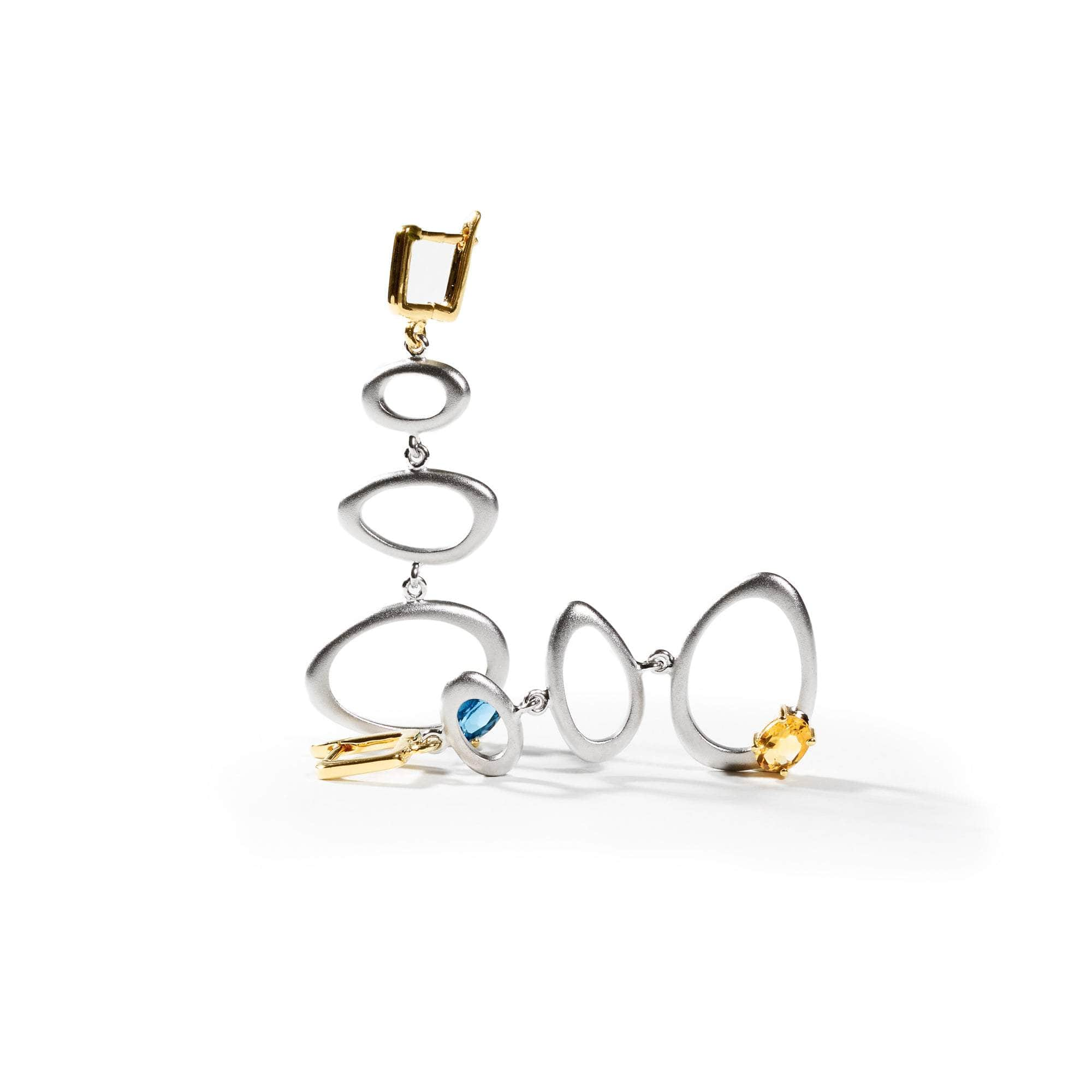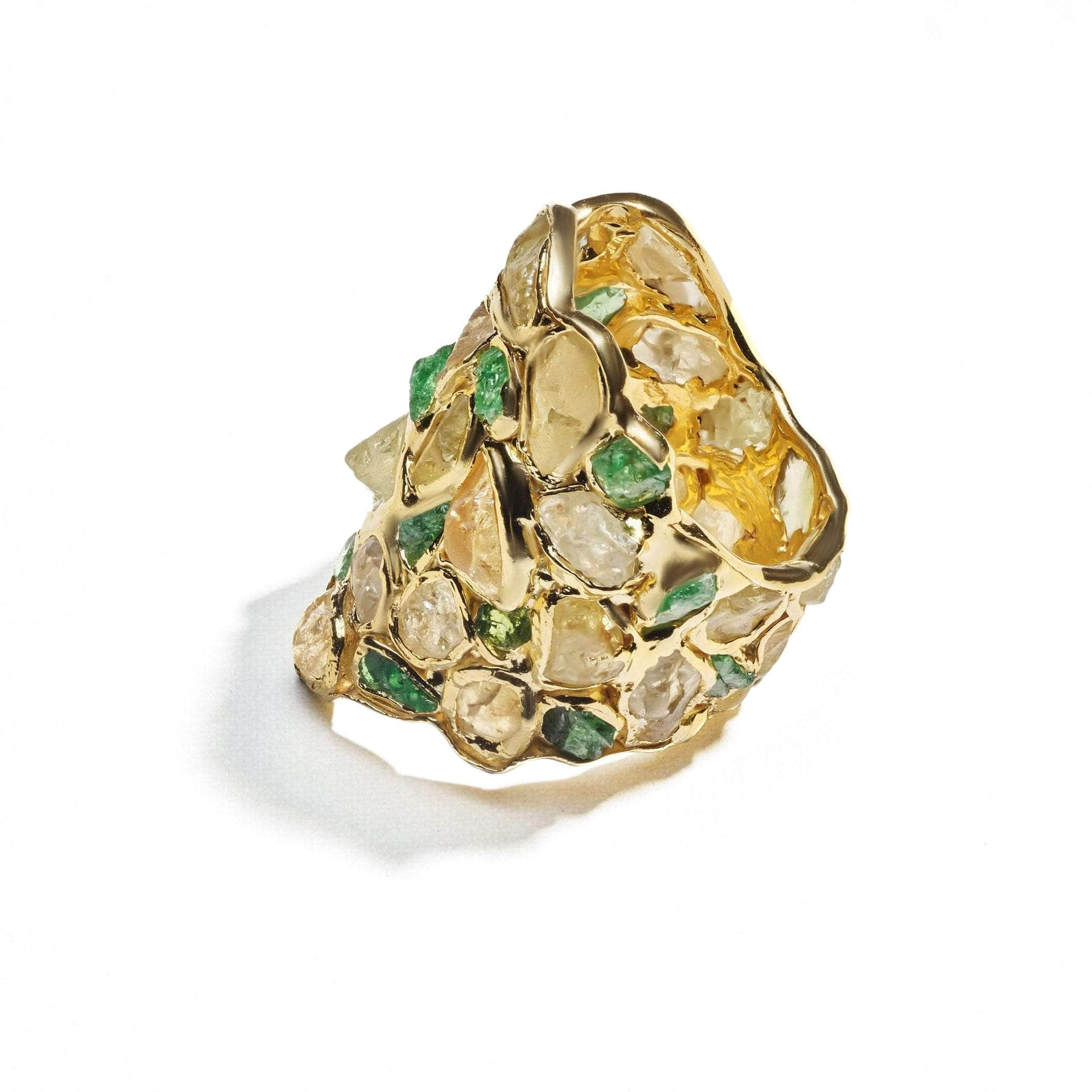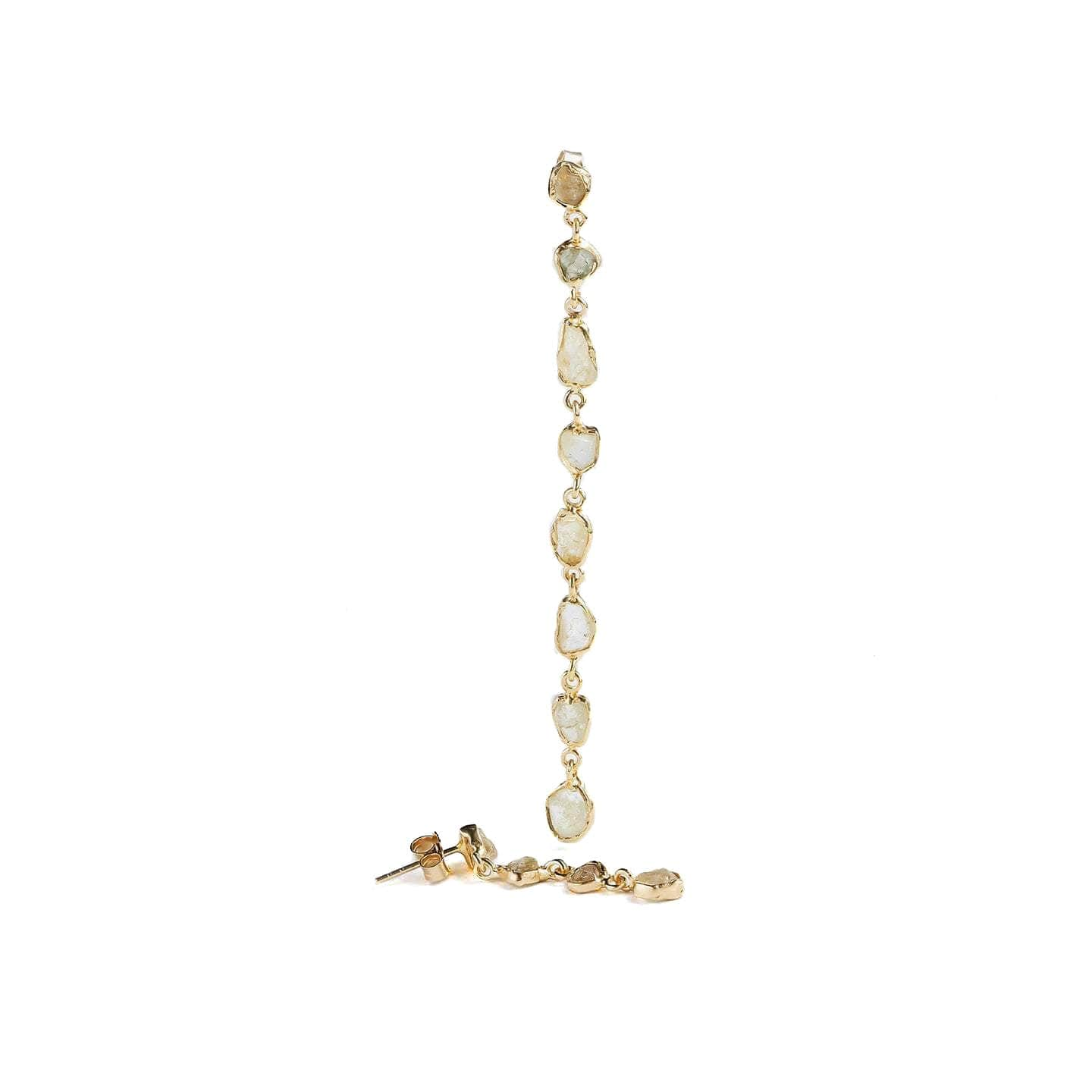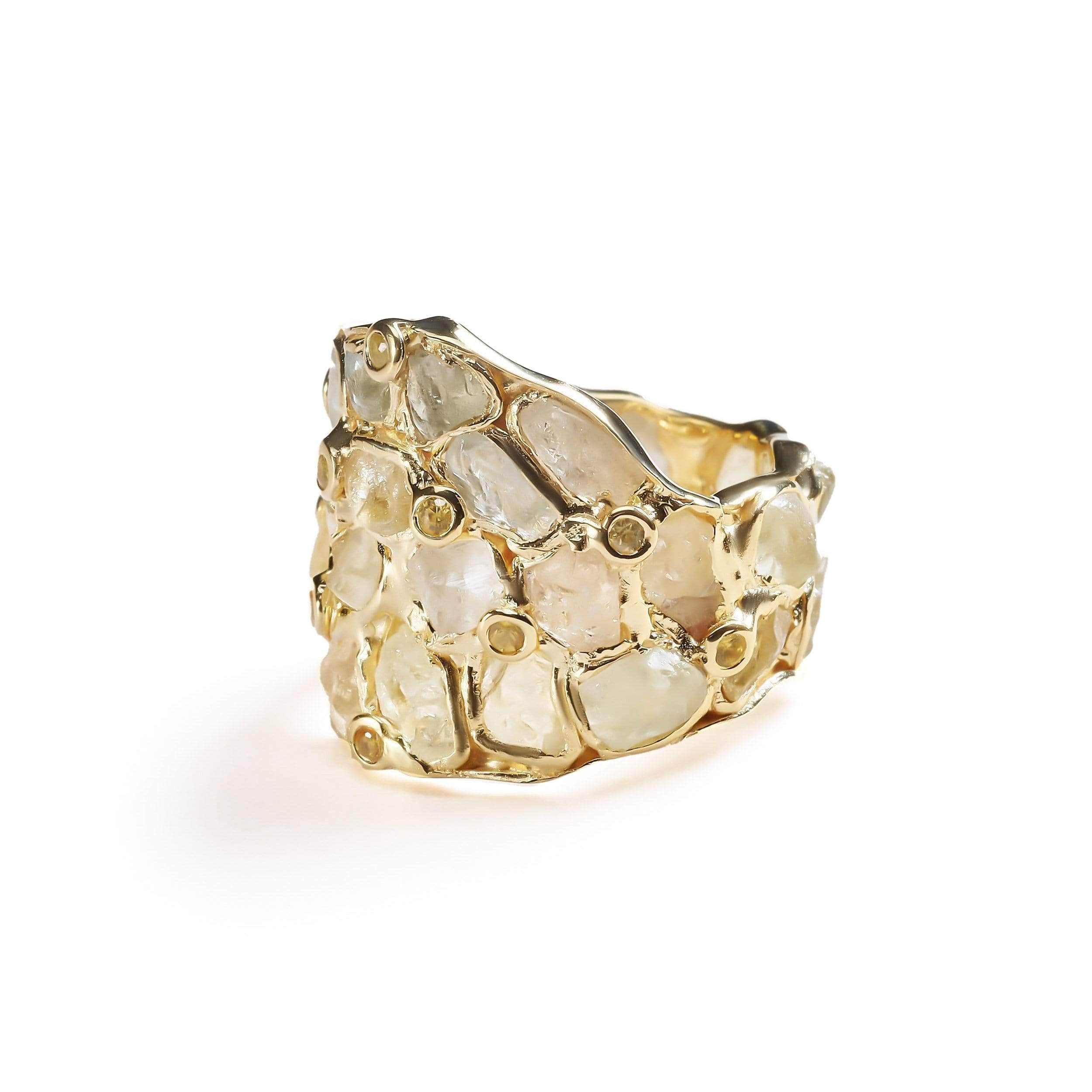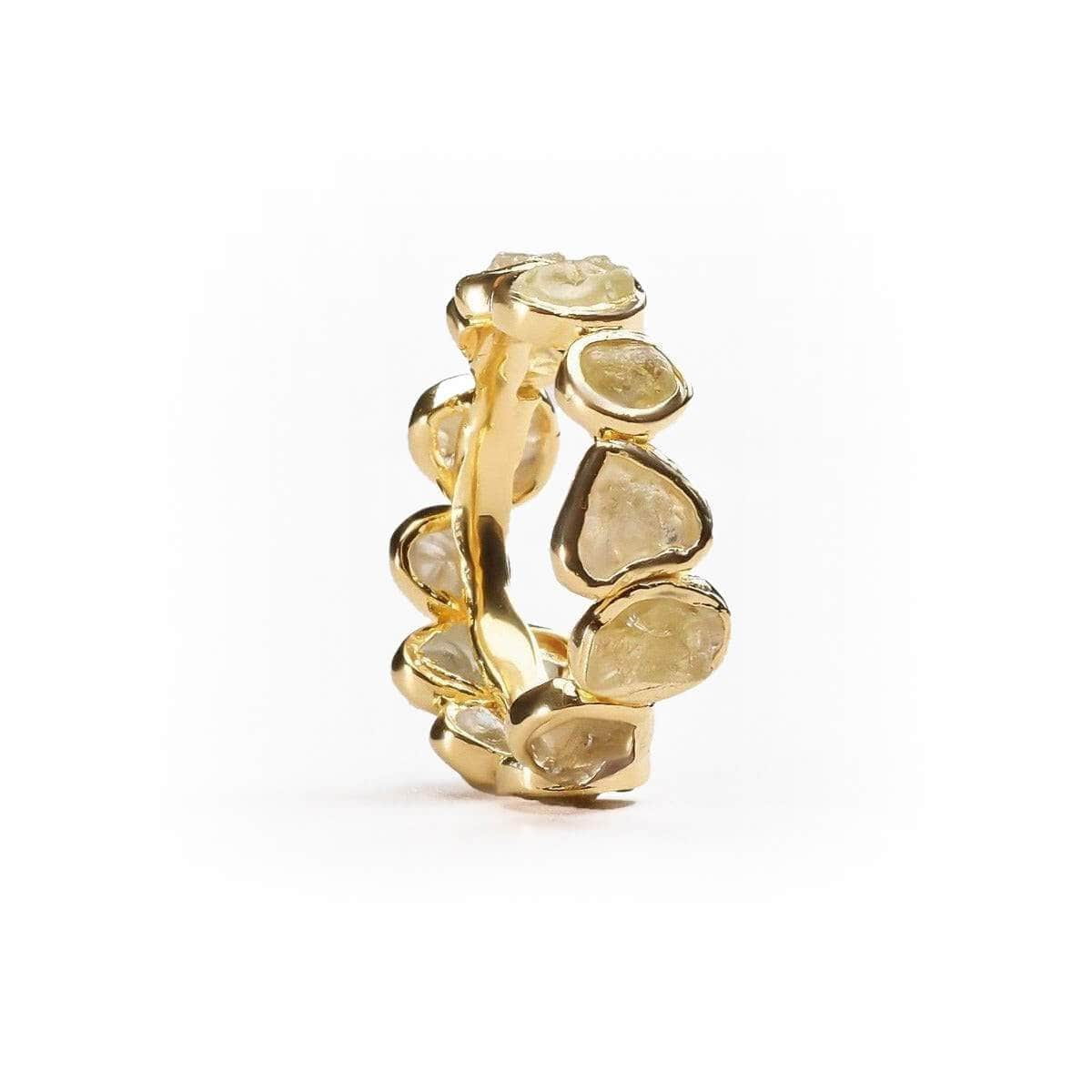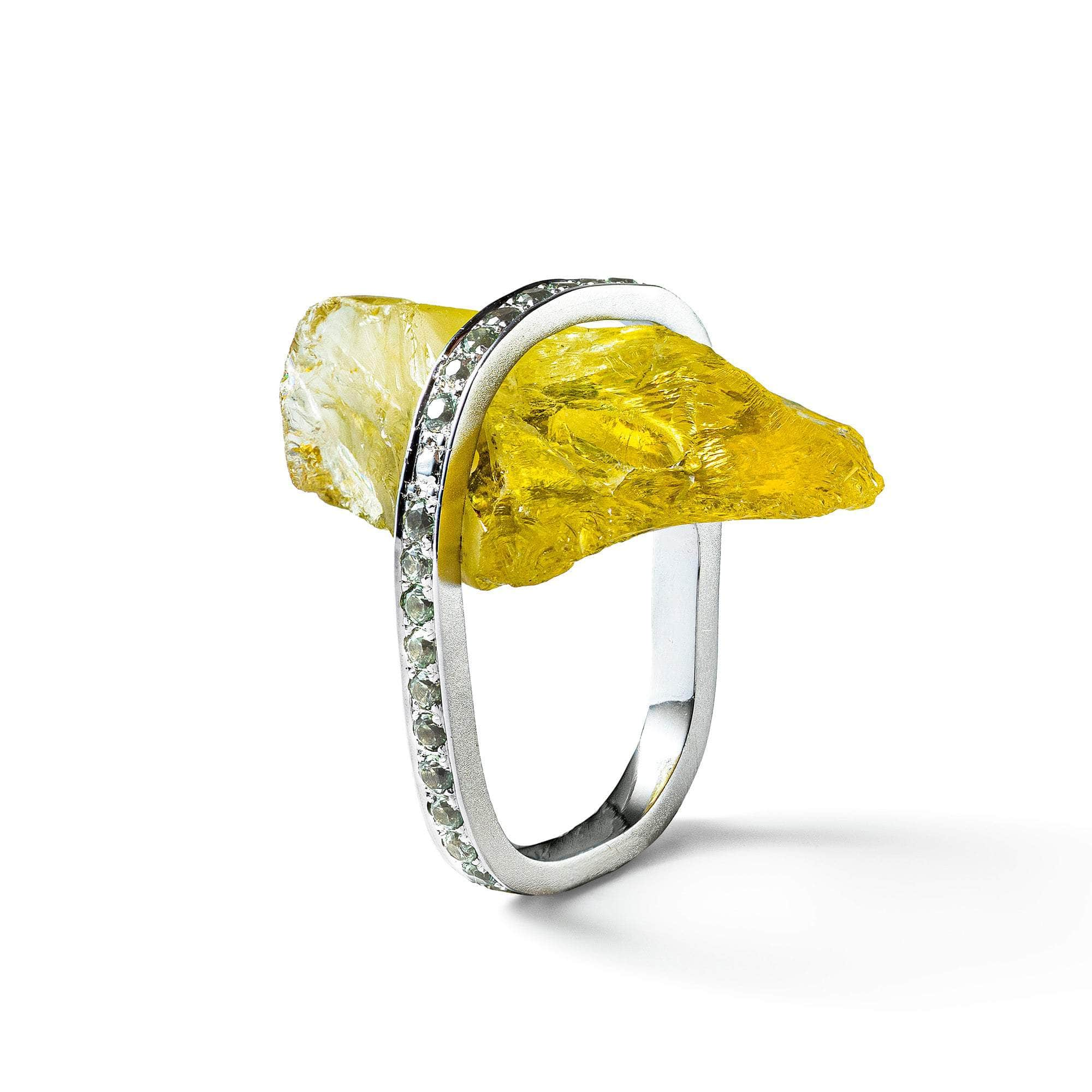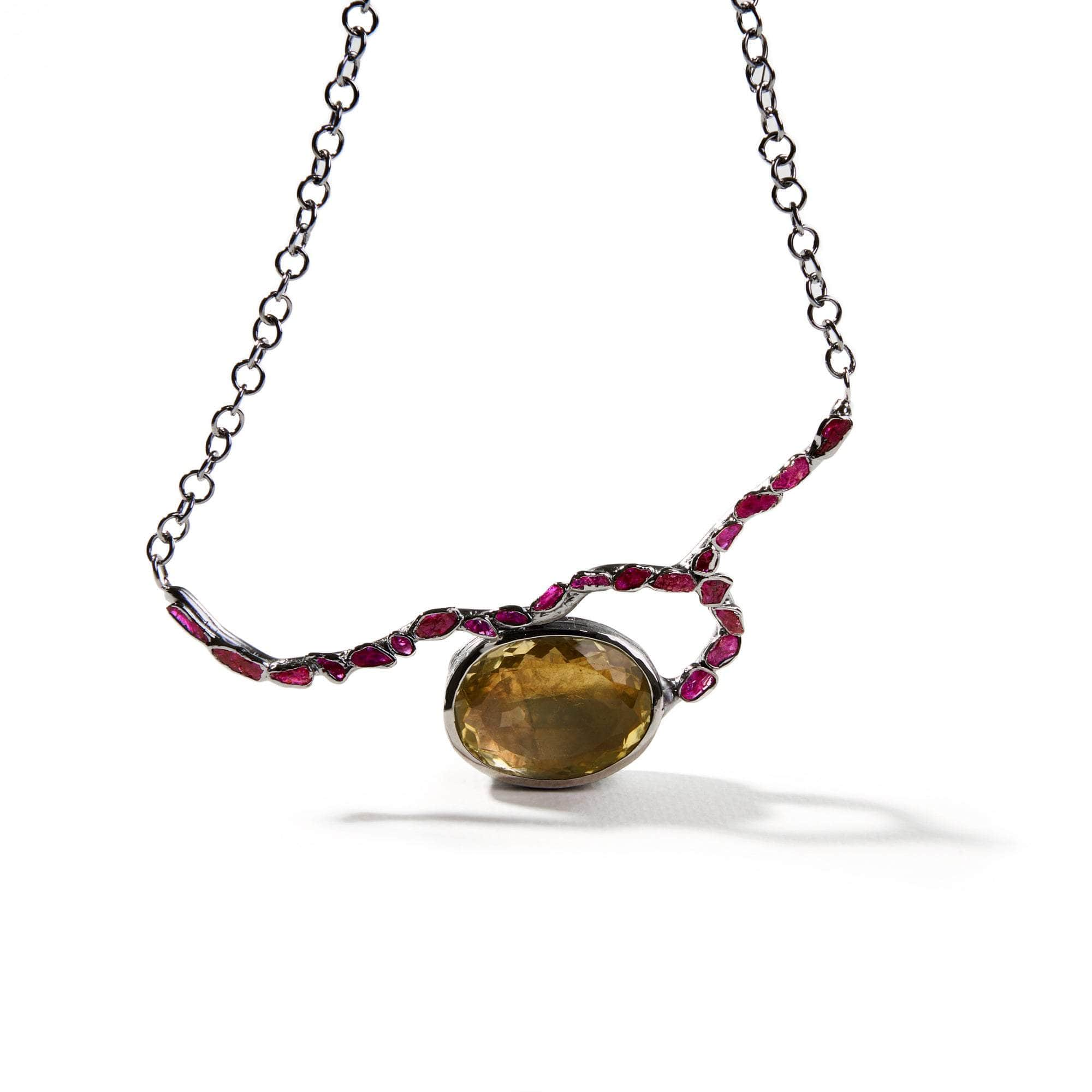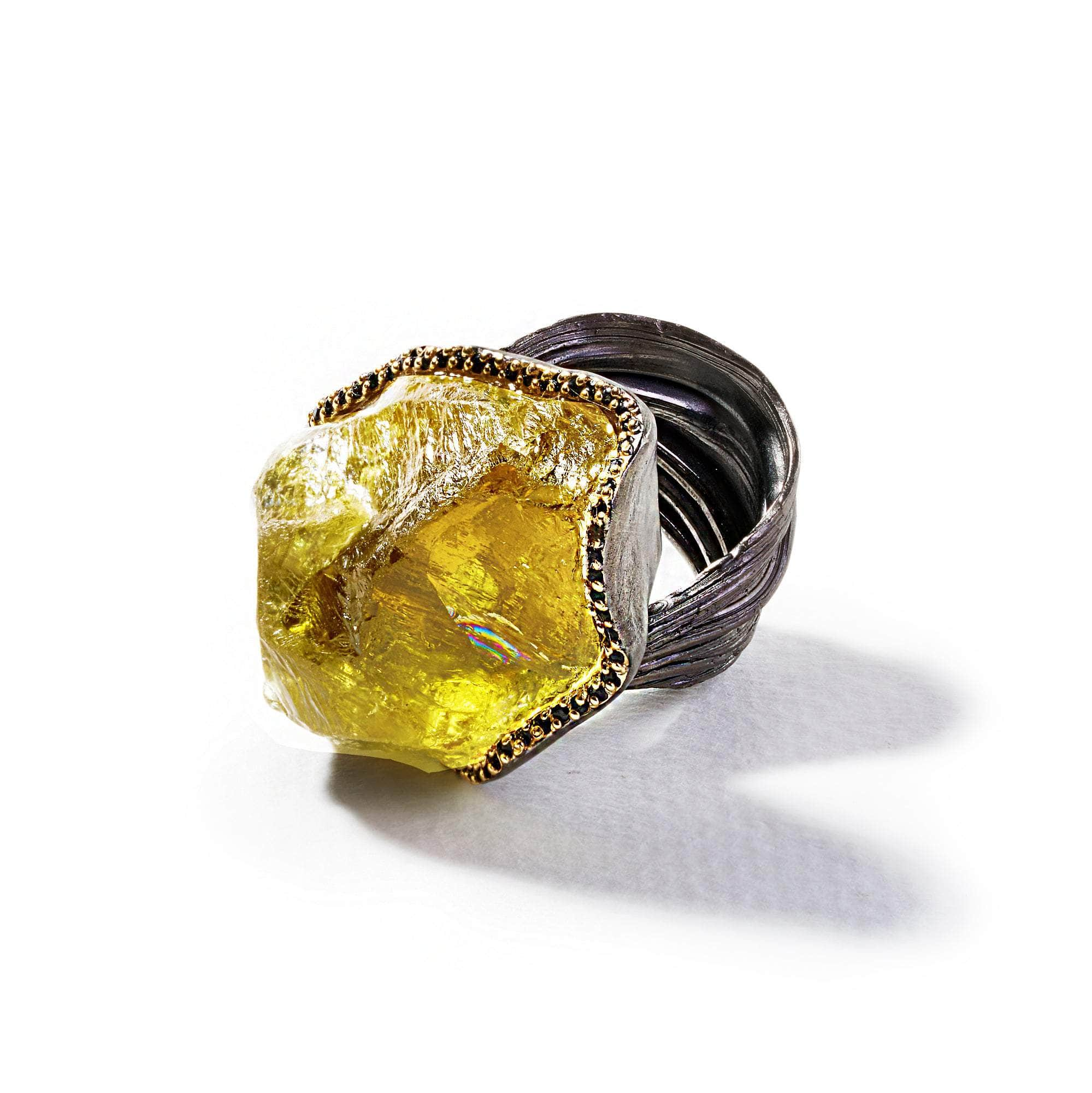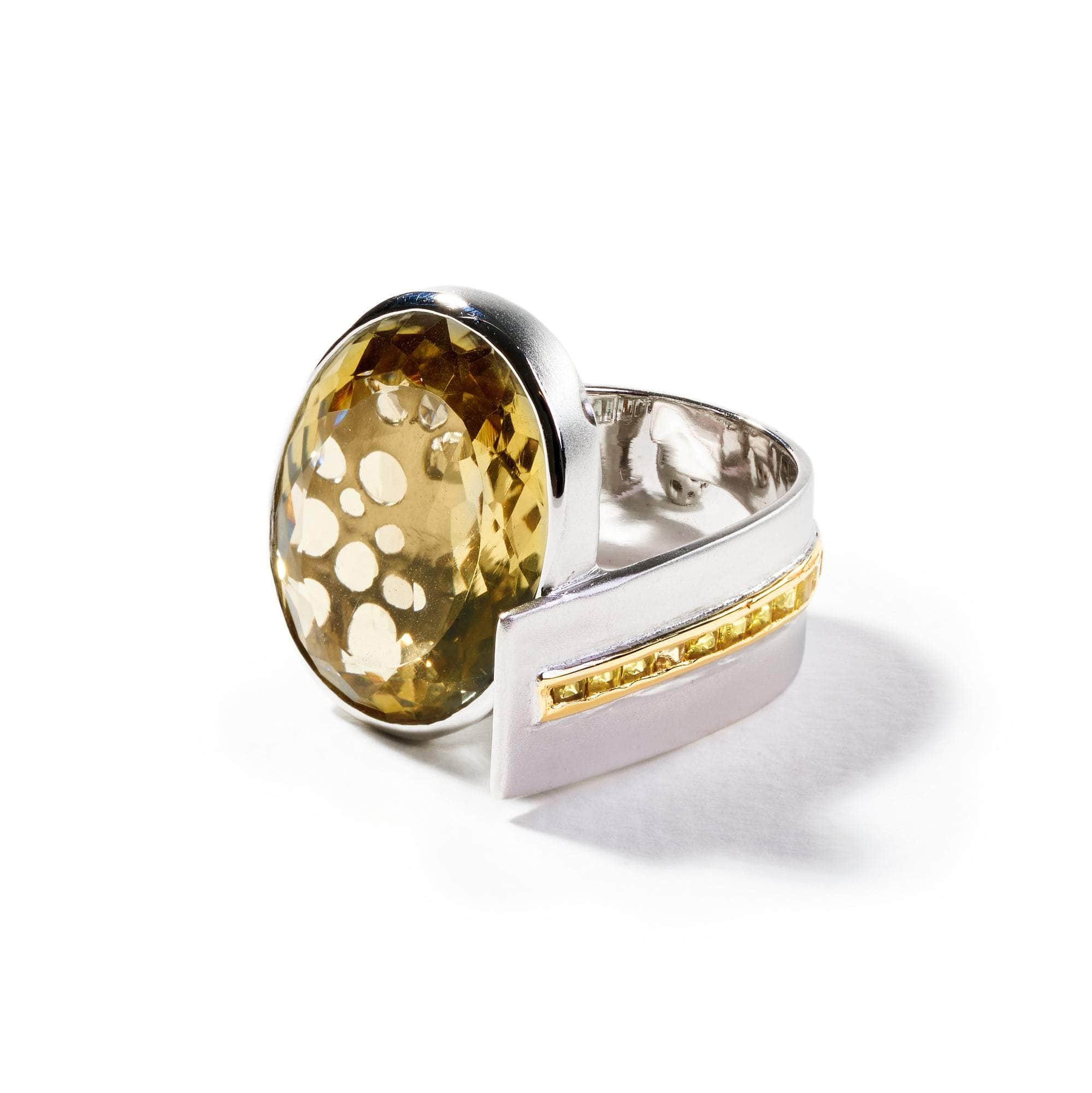Yellow Gemstones: A Comprehensive Guide for Jewelry Designers and Enthusiasts
Crafting Jewelry Trends with Citrine, Yellow Sapphire, Tourmaline, Chrysoberyl, and Lemon Quartz
Yellow gemstones have long been revered for their radiant hues, evoking the warmth and energy of the sun. Throughout
history, these luminous stones have adorned jewelry pieces not only for their sheer beauty but also for their
symbolic significance and purported protective powers. In the world of jewelry design, yellow gemstones are
celebrated for their versatility and the vibrant touch they add to both contemporary and traditional pieces. From the
soft glow of citrine to the dazzling brilliance of yellow diamonds, these stones offer a spectrum of options for
designers, promising to infuse any creation with a sense of energy and vitality.
Believed to carry
metaphysical properties, yellow gemstones are often associated with clarity, joy, and optimism. While the scientific
community remains neutral on these claims, many wearers value these stones for both their aesthetic appeal and their
potential to promote emotional well-being. Citrine, known as the "merchant's stone," is said to attract abundance and
prosperity. Yellow sapphire, with its exceptional hardness and durability, is believed to bring wisdom and fortune.
Yellow diamonds, rare and sought-after, are often associated with joy and celebration, making them a favorite for
engagement rings and special occasions.
The array of yellow gemstones extends beyond these well-known
examples. Topaz, available in a variety of yellow shades, from pale to deep golden, is thought to offer protective
properties to its wearer. Amber, though not a gemstone in the traditional sense but rather fossilized tree resin, is
cherished for its warm, soothing energy and historical significance. Each of these yellow gemstones brings its own
unique qualities and stories to the table, making them a fascinating subject for jewelry designers and
collectors.
Yellow gemstones feel like home in German Kabirski Freakaverse, often used alone or combined with
contrasting elements for an unconventional feel. The brand frequently incorporates citrine, yellow sapphire, yellow
tourmaline, chrysoberyl, and lemon quartz into its modern designs. Exploring how these yellow gemstones are utilized
offers insight and inspiration for jewelry design, emphasizing their importance in contemporary creations.
Yellow Sapphire: The Crown Jewel of German Kabirski Freakaverse
Yellow sapphire isn't just another gemstone for German Kabirski; it's a key player in his jewelry designs. German picks this gem for its toughness and the way it looks, making it a go-to choice for pieces meant to last and catch the eye. It's this gemstone's mix of practicality and beauty that places it at the heart of many collections, embodying the brand's commitment to creating durable, yet visually appealing jewelry.
Gemologically, yellow sapphire stands out for its impressive hardness, ranking just below diamonds on the Mohs scale. This makes it not only beautiful but also incredibly durable and resistant to scratches, a key consideration for everyday jewelry. Beyond its toughness, the gemstone exhibits a range of colors from pale lemon to deep gold, enhanced by its natural refraction that brings out the depth and richness of its hues. Inclusions and color banding, far from being flaws, are embraced by German as they lend each piece a unique fingerprint, adding to the individuality and charm of his designs.
Pairing yellow sapphire with other colorful gems is something of a signature move for German Kabirski, resulting in jewelry that's full of life. He likes to mix yellow sapphires with greens, oranges, and pinks, creating a rainbow effect that's become a trademark of his work. This isn't just about making something pretty; it's about pushing boundaries and mixing things up, showing off what you can do when you're not afraid to experiment with color and texture.
Pearl farming, too, has its ethical dilemmas. While it's promoted as a more sustainable alternative to wild pearl
harvesting, concerns about the welfare of mollusks and the potential for environmental degradation remain. The debate
extends to the impact of pearl farms on local ecosystems, including water pollution and the spread of diseases among
wild and farmed mollusk populations. The question arises: Can pearl farming be managed in a way that truly minimizes
harm to marine environments?
The collection of amber and ammonite raises questions about the balance between
commercial interests and scientific value. These organic gemstones provide invaluable insights into Earth's history,
but their popularity in jewelry can lead to overexploitation. The ethical debate here revolves around how to ensure
that the pursuit of these gems does not strip future generations of the chance to study and learn from these natural
archives.
Finally, the use of bones and ivory in jewelry brings to the fore issues of wildlife conservation
and animal rights. Despite international regulations like the CITES agreement, the illegal trade of ivory continues
to pose a threat to elephant populations. This situation forces a reconsideration of how animal-derived materials are
used in jewelry, pushing for ethical sourcing practices that do not contribute to the endangerment of
species.
These ethical and sustainability concerns surrounding organic gemstones are real and pressing. They
challenge consumers, designers, and policymakers to think critically about the origins of the materials they cherish
and the impact of their choices on the planet. The ongoing debate emphasizes the need for transparent sourcing
practices, stricter regulations, and a collective move towards more sustainable and ethical jewelry production
methods.
Raw and Faceted Yellow Sapphire in Rings, Pendants, Brooches, and Earrings
German Kabirski's use of yellow sapphire across various types of jewelry showcases his versatility and innovative approach to design. Whether it's rings, pendants, brooches, or earrings, both in his serial designs and one-off creations, German's affinity for this gemstone is evident. He has a particular fondness for raw, unpolished sapphires, appreciating their natural, untouched beauty. This love for the gemstone's authentic form is highlighted in pieces from the new Shuffle Collection, where rough yellow sapphire rings make a bold statement in combination with other natural gemstones. These raw sapphires, with their natural imperfections and untouched allure, embody the brand's philosophy of finding beauty in the raw and real.
Faceted yellow sapphires, on the other hand, are reserved for German's exclusive pieces, where they serve as bright, eye-catching accents. The precision cuts of these faceted sapphires enhance their natural brilliance, allowing the stones to catch and reflect light in a way that truly captivates. Whether set in a delicate pendant, a statement brooch, or elegant earrings, faceted yellow sapphires add a touch of sophistication and luxury, making each piece a dazzling work of art. German's expertise in blending the raw with the refined allows for a jewelry collection that's both diverse and harmonious, offering something for every taste and occasion.
Importantly, all sapphires used in German Kabirski's designs, whether yellow or another color, are completely natural, with no artificial enhancements. This commitment to authenticity ensures that each gemstone, with its inclusions and color banding, tells its own unique story. These characteristics are celebrated as marks of authenticity, not flaws, highlighting the natural beauty and uniqueness of each piece. German's approach to using yellow sapphire in his jewelry not only showcases the gemstone's versatility but also reinforces the brand's dedication to creating pieces that are true to nature's design, offering wearers a connection to the earth and its raw beauty.
Citrine: Gemological Properties and Its Role in Jewelry Design
Citrine, with its captivating range of yellow hues, is a gemstone that has long fascinated both jewelers and collectors alike. Gemologically, citrine is a variety of quartz, and its color can range from pale yellow to brownish-orange. This spectrum of color is primarily due to the presence of iron impurities within the quartz. The depth and intensity of citrine's color depend on the amount of iron present and the conditions under which the quartz was formed. Heat enhances the color of natural citrine, turning it into the warm, golden tones that are highly sought after.
Beyond its physical attributes, citrine is also believed to possess various metaphysical properties. It is often called the "merchant's stone" due to a belief in its ability to attract wealth and prosperity. Additionally, citrine is said to carry the power of the sun, bringing energy and joy to the wearer.
Moreover, citrine’s durability, owing to a Mohs hardness rating of 7, along with its availability and the versatility of its color, makes citrine an ideal candidate for experimentation in design. Designers appreciate the freedom citrine affords them to explore various cuts, settings, and combinations with other gemstones, resulting in innovative and unconventional pieces. Whether featured in a bold, statement piece or used as a subtle accent in a more intricate design, citrine brings a touch of warmth and brightness, making it a favorite for those looking to add a vibrant yet elegant touch to their jewelry collection.
Raw and Cut Citrine in German Kabirski Experimental Jewelry
German Kabirski's fascination with citrine stems from its versatile properties that make it an ideal gemstone for experimental jewelry design. His preference leans towards fully natural citrine, embracing its inclusions, cracks, and varied color areas as marks of authenticity and beauty. In the German Kabirski collection, you won't find citrine that has undergone artificial treatment. This commitment to natural beauty ensures that each piece of citrine retains its unique characteristics, contributing to the distinctiveness of the jewelry it adorns.
The use of raw citrine is particularly prominent in German Kabirski’s work, where it becomes the centerpiece of singular, one-of-a-kind creations. By incorporating raw citrine, each jewelry piece is imbued with a unique character, as if alive, seeking out the one person in the universe it's meant to pair with. These creations are more than just accessories; they are envisioned as powerful protectors and modern amulets, designed to resonate on a deeply personal level with their wearer.
German Kabirski's approach transforms jewelry into a statement against the ordinary, encouraging wearers to think outside the box—or rather, to forget the box ever existed. While the metaphysical claims of citrine bringing wealth are not guaranteed, the placement of citrine in German Kabirski's unconventional pieces offers a different kind of protection. It shields against the mundane, sparking creativity and inspiring a bold, unconventional way of thinking. This philosophy underpins the brand's identity, with citrine playing a pivotal role in challenging traditional design norms and promoting individuality.
The allure of citrine in German Kabirski’s experimental jewelry lies not only in its natural beauty but also in the ethos it represents. Each piece, whether featuring raw or cut citrine, tells a story of innovation, authenticity, and a break from convention. Through his creative use of citrine, German Kabirski invites jewelry lovers to embark on a journey beyond the ordinary, into a world where each piece is a testament to the unique bond between the gemstone and its wearer. In this way, citrine becomes more than just a gemstone; it is a catalyst for personal expression and transformation.
Yellow Tourmaline: The Unconventional Leader of Freakaverse Nation
Tourmaline, a captivating mineral known for its extensive color range, is celebrated for its unique properties and versatility in jewelry design. Among its many hues, yellow tourmaline stands out as a vibrant and rare variant. This gemstone owes its diverse palette to trace elements like iron, manganese, and lithium, which affect its coloration during formation. Yellow tourmaline, in particular, can display shades from pale lemon to deep, rich gold. Its hardness, rated at 7 to 7.5 on the Mohs scale, alongside its vitreous luster, makes it both a durable and attractive choice for jewelry, capable of withstanding daily wear while maintaining its brilliant sparkle.
Metaphysical enthusiasts attribute various properties to tourmaline. Yellow tourmaline is said to inspire creativity, boost self-confidence, and even act as a magnet for wealth and prosperity. While these claims might not hold up in a lab, they certainly add an intriguing layer of mystique to the gemstone. It's this blend of beauty and lore that gives yellow tourmaline its unique charm, inviting a playful exploration of its supposed powers.
The vast spectrum of colors in tourmaline makes it an ideal candidate for the most daring and innovative jewelry designs. German Kabirski, in particular, has a penchant for utilizing tourmaline's natural beauty in his work. Whether in its raw, crystal form or precisely faceted, tourmaline allows for a wide range of creative expression. German's designs often feature tourmaline as the centerpiece, celebrated for its natural inclusions and color variations that make each piece truly one-of-a-kind.
German Kabirski's singular creations, featuring yellow tourmaline, stand out as testaments to the stone's versatility and allure. The gemstone's vibrant colors and natural beauty are leveraged to create pieces that are not just jewelry, but bold statements of individuality and creativity. By embracing the unconventional, German showcases the potential of yellow tourmaline to transform traditional jewelry into extraordinary, memorable pieces. In Freakaverse, yellow tourmaline leads the way, inspiring designs that challenge the mundane and celebrate the unique beauty of the natural world.
Chrysoberyl Raw Crystals in German Kabirski's 'Stained Glass' Jewelry
Chrysoberyl is a gemstone that possess unique gemological and geological characteristics. Known for its exceptional hardness, ranking at 8.5 on the Mohs scale, chrysoberyl boasts durability that is second only to corundum and diamonds among naturally occurring gemological materials. This resilience makes it a perfect selection for jewelry that you wear every day. The stone's color spectrum ranges from yellow-green to brown, with the most prized varieties exhibiting the coveted cat's eye effect or changing colors under different lighting conditions. These natural phenomena are due to the gemstone's unique crystalline structure and the presence of trace elements, which contribute to its remarkable optical properties.
At German Kabirski, the chrysoberyl gemstones we select for our creations are entirely natural, sourced from the earth with no treatments or enhancements. This commitment to natural beauty ensures that each piece retains the authentic characteristics of the gemstone, including its inclusions, color variations, and unique textures. By choosing untreated chrysoberyl, we embrace the raw essence of the earth's artistry, bringing forth jewelry that connects deeply with those who value the imperfect beauty of nature.
German Kabirski's innovative 'Stained Glass' design technique is particularly well-suited to showcasing the natural allure of raw chrysoberyl crystals. In this signature approach, each irregularly shaped crystal is carefully wrapped in precious metal—be it gold or silver—and then artfully connected like pieces of a puzzle. This method not only secures the gemstone but also highlights its unique shape and color, creating a kaleidoscopic effect reminiscent of traditional stained glass art. The result is a series of rings, pendants, and earrings that capture the light in mesmerizing ways, celebrating the gemstone's natural beauty.
Chrysoberyl, in its raw form, has become a popular choice for German Kabirski, particularly for inclusion in his hallmark 'Stained Glass' collection. The choice of raw chrysoberyl is deliberate, aimed at preserving the connection to the natural world and the forces that shape our universe. The irregularity of each crystal adds character and depth to the jewelry, making every piece a one-of-a-kind creation that speaks to the individuality of its wearer. These pieces are not just accessories; they are a bridge to the natural world, designed to resonate with those who wear them on a personal and profound level.
Through his 'Stained Glass' collection featuring raw chrysoberyl, German Kabirski invites us to explore the boundary between art and nature. Each piece is a testament to the beauty of the natural world, transformed through craftsmanship into wearable art that carries a piece of the earth's mystery. This collection is more than just jewelry; it's an invitation to connect with the raw, untamed beauty of nature and the imaginative possibilities that lie beyond our ordinary experiences. In the hands of German Kabirski, chrysoberyl becomes a medium for expressing the deep, intrinsic connection we share with the natural forces that govern our world.
The name "chrysoberyl" is derived from the Greek words "chrysos" and "beryllos," meaning "gold" and "green gemstone," respectively. This nomenclature beautifully captures the essence of chrysoberyl, with its vibrant green to golden-yellow hues that echo the natural landscapes from which it emerges. The name itself is a homage to the gemstone's visual allure and its earthy roots, reinforcing the connection between German Kabirski's creations and the natural world.
Chrysoberyl's role in German Kabirski's jewelry transcends its gemological properties and aesthetic appeal. The gemstone, rooted in the earth and named for its golden-green brilliance, becomes a conduit for stories, emotions, and the timeless beauty of nature itself. Through his visionary 'Stained Glass' collection, German Kabirski invites us to experience jewelry not just as an adornment but as a celebration of the natural world's unspoiled beauty, connecting us to the forces beyond our imagination and reminding us of the earth's boundless wonders.
Unconventional Jewelry Design with Yellow Gemstones
Yellow gemstones are really making waves in today's jewelry scene. It's all about using these bright and cheerful stones to craft pieces that haven't been seen before. Designers like German Kabirski are leading the charge, turning to citrine, yellow sapphire, and chrysoberyl to inject a fresh, vibrant energy into their work. These gems are not just about color; they're about experimenting with new ideas and shapes, leading to jewelry that truly stands out.
But there's more to these stones than just their looks. Yellow gemstones also have this way of connecting us to the natural world and even to something a bit mystical. Wearing a piece with a yellow gem feels special, like you're tapping into the sun's energy or some ancient, earthy magic. This blend of unique design and a deeper, natural connection makes yellow gemstones the go-to for creating pieces that are one of a kind. As we look forward, it's clear that the influence of these sunny gems on jewelry design is only going to grow, offering more opportunities for creativity and connection.
